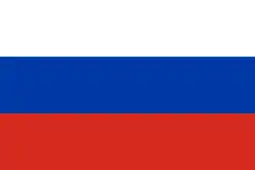Juma-Jami Mosque
The Juma-Jami Mosque, (Ukrainian: Мечеть Джума-Джамі, Crimean Tatar: Cuma Cami, Russian: Мечеть Джума-Джами) also known as the Friday Mosque, is located in Yevpatoria, Crimea. Built between 1552 and 1564, and designed by the Ottoman architect Mimar Sinan.
| Juma-Jami Mosque | |
|---|---|
 | |
| Religion | |
| Affiliation | Islam |
| Rite | Sunni |
| Status | Active |
| Location | |
| Location | Yevpatoria |
| State | Disputed between Russia and Ukraine[1] |
| Territory | |
| Geographic coordinates | 45°11′45″N 33°22′38″E |
| Architecture | |
| Architect(s) | Mimar Sinan |
| Type | Mosque |
| Style | Ottoman architecture |
| Completed | 1564 |
| Specifications | |
| Direction of façade | North |
| Dome height (outer) | 20 meters |
| Dome dia. (outer) | 6 m (20 ft) |
| Minaret(s) | 2 |
| Minaret height | 35 meters |
| Materials | Limestone |
History
The Juma-Jami is the largest mosque of Crimea and was founded by Khan Devlet I Giray in 1552. The Khan commissioned Istanbul architect Mimar Sinan (1489–1588) to build the mosque. Sinan was the chief architect of the Ottoman Empire. He designed the Sinan Pasha Mosque and the Şehzade Mosque in Istanbul. Construction of the Juma-Jami Mosque was a long process. At the time, Mimar Sinan was busy with construction of the Süleymaniye Mosque, in Istanbul, which was also plagued by financial difficulties due to money being spent on a war with Ivan the Terrible.
Photos
 Main entrance to the Juma-Jami Mosque
Main entrance to the Juma-Jami Mosque





References
- This place is located on the Crimean peninsula, most of which is the subject of a territorial dispute between Russia and Ukraine. According to the political division of Russia, there are federal subjects of the Russian Federation (the Republic of Crimea and the federal city of Sevastopol) located on the peninsula. According to the administrative-territorial division of Ukraine, there are the Ukrainian divisions (the Autonomous Republic of Crimea and the city with special status of Sevastopol) located on the peninsula.
External links
| Wikimedia Commons has media related to Juma-Jami Mosque in Eupatoria. |
- Han Camii, Archnet

.jpg.webp)




